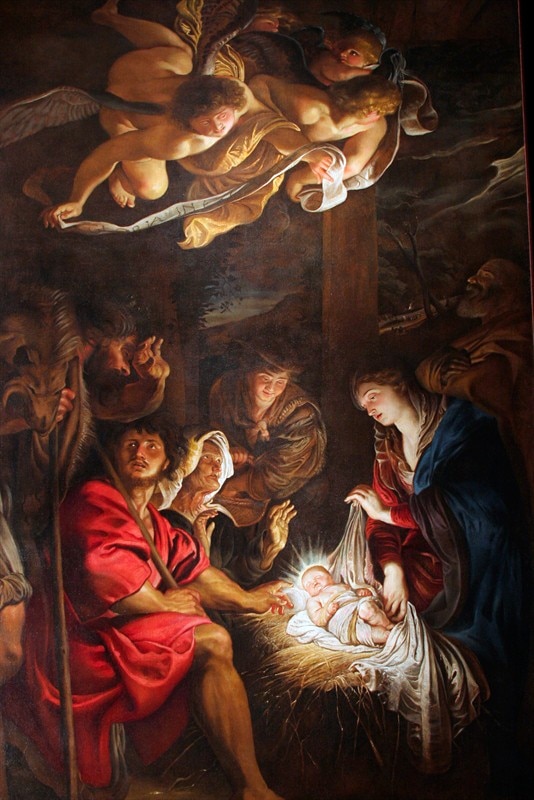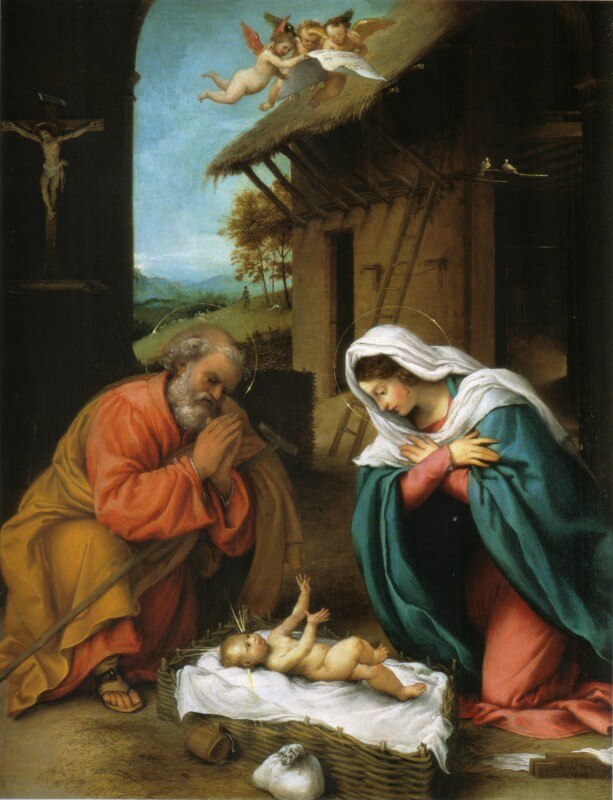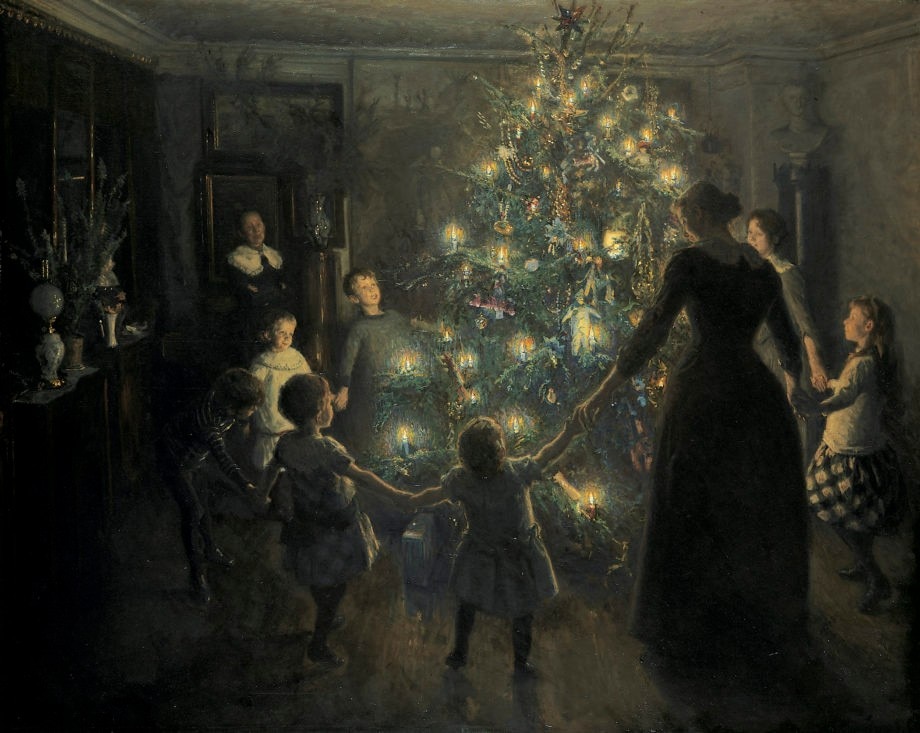In a cold Paris of the 1930s, Giacomo Puccini describes Christmas Eve: “What? Dine at home on Christmas Eve when the Latin Quarter has decked its streets with eatables? When the perfume of fritters is wafted through the ancient streets? It's Christmas Eve! There the girls sing happily… And each has a student echoing her! Have some religion, gentlemen: we drink at home, but we dine out”. (La Bohème)
In 2020, Christmas will be different in every part of the world. Perhaps it will be a more religious and less pagan holiday – an intimate holiday.

Paintings, too, recount Christmas through religious and mystical symbols and figures, such as Lorenzo Lotto’s Adoration of the Christ Child, a work that is apparently simple to read and understand, but which reveals a complex symbolism, starting with Saint Joseph, who is depicted in an unusual posture. His figure is placed on the same level as the Virgin, whereas in other works he is often in the background, further away from the Child Jesus, as if he were a stranger, precisely to underline his role in the divine miracle. Behind the Virgin, we see a staircase, the symbol of the union between heaven and earth, the symbol of an earthly miracle performed by God. Next to the staircase are a pair of turtle doves representing marital fidelity, the faithfulness of the church to its spouse. The story narrated in the work has a circular path: it starts with the figure of the Child, continues with the Madonna depicted in complete adoration, reaches the staircase which leads, as we have said, to heaven, among the angels, and ends with the symbol of the cross on the left side of the painting. The theme of birth and death reminds the faithful of the promised resurrection.
Commissioned by Father Flaminio Ricci and completed in a few months for the San Filippo Neri church in Fermo, Rubens’ painting, Adoration of the Shepherds, addresses the theme with completely different colours, lines of force, and characters. The scene is richer, more elaborate, and is made artificial by the use of light that comes from the main subject: the Christ Child. The shepherds are in turmoil, amazed by the birth of the son of God, while the Virgin, already aware of the divine greatness, is serene, not at all astonished, aware of the act of love, while her husband, Saint Joseph, is hidden in a corner, in the shadow created by the painter, with his arms folded, surrendered but with a face that suggests he is praying, also sure of the divine greatness but fearful of the future. The painting is guided by light, articulated in the shadows, where the figures adapt even if they are excited, like the group of angels, which Lotto also includes, who watch over the scene from above as God’s emissaries.

Moving away from religious paintings, which were mainly commissioned by the ecclesiastical world, let’s focus on a more contemporary century, where Christmas is represented by details that are familiar to us and emotions unrelated to the religious world. At the end of the 19th century, in the heart of Denmark, one of the most influential painters of northern Europe, Johansen Viggo, painted a work that is somewhat similar to Rubens’ painting. The light from the Christmas tree illuminates the room, where numerous children gather in a circle, excited, happy, amazed by the grandeur of the tree. Women and children, a sweet home, an eagerly awaited moment full of magic, the same magic that preserves the birth of the son of God, but which for Viggo shifts, due to the culture of his country, to a more profane theme, dedicated however to the family.
This year we will experience a different Christmas, far from the idea of family that these works suggest. However, it will come back next year, and we’ll hardly remember this bizarre time.
Opening image: Happy Christmas, Johansen Viggo, 1891


